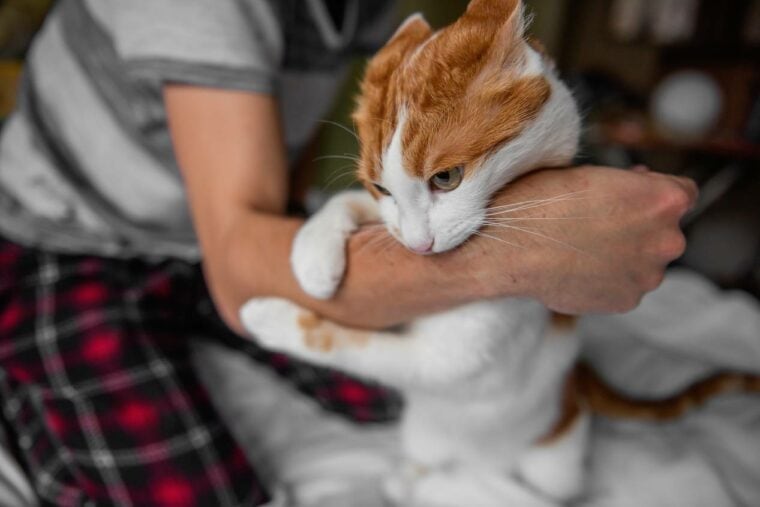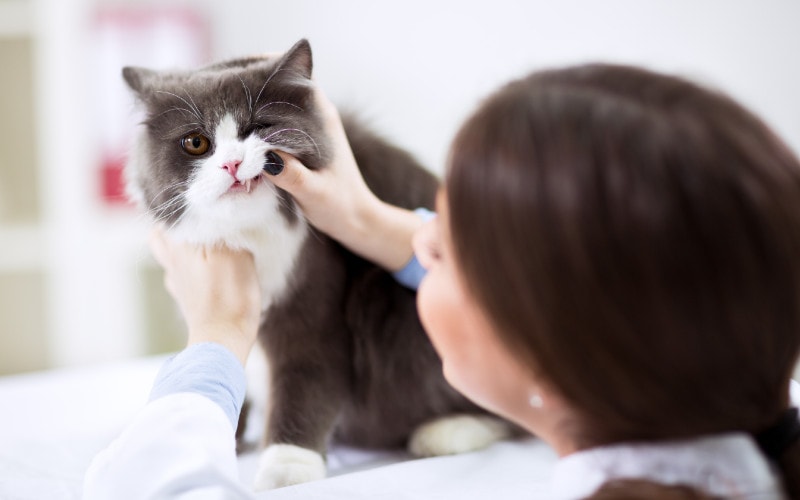
All pets have something different to offer, and that’s what makes them special. The only issue that we have with the feline community is how they sometimes like putting their lightning-fast reflexes to the wrong use!
For example, pouncing on their owners’ arms—as though it’s prey—and trying to bite off a huge chunk of meat—at least that’s how it seems, anyway.
If you’d like to know why your cat likes to indulge in such an act, keep on reading. We’ll also be sharing with you tips on how to treat the bite, as well as ways you can prevent it from happening more frequently.
The 6 Reasons Why Your Cat Grabs and Bites Your Arm
1. Honing Hunting Skills
Kittens are cute and cuddly, and that’s why it’s easy for some people to forget that they are also budding hunters. They’ll bite whatever they can get their paws on, especially while playing with their littermates, to develop their hunting skill.
Instinctively, they know they won’t be able to survive in the wild if they aren’t proficient hunters. Even if you always make sure they have everything they need they’ll still work hard to perfect the skill in case they ever need it one day.
2. Teething Pain
Teething kittens like to exhibit traits that are very similar to teething babies. They are always ready to bite and chew on anything, hoping to ease the discomfort and pain that characterizes the teething process.
Just so you know, the teething stage is the best time to let your kitten know it’s wrong to chew or bite your arm. They are more malleable at this stage, compared to their later years.

3. Play Biting
While this form of behavior is considered a common episode among kittens, we’ve seen adult cats exhibit the same while playing with their peers any time they are in a good mood or feel content. And by “playing” we mean stalking and pouncing on each other, the same way they would while hunting their preferred prey.
Play-biting is particularly important to indoor cats because they are innate predators. Being natural hunters, it’s the only avenue that they can use to exercise the need to claw, pounce, or bite small mammals and birds.
4. Communication
Biting as a form of communication is what we like to call “unprovoked biting.” You’ll likely find it aggressive and annoying, only to realize that it’s the cat’s civil way of letting you know that you need to stop petting certain areas of their bodies.
Cats are different from dogs in the sense that they often react negatively to overstimulation or excitement. Of course, they’ll give you subtle signs if they’d like you to stop, but if you’re not paying attention or reading the cues, they’ll resort to a more direct approach.

5. Showing Affection
Biting or nibbling your arm once in a while might not necessarily be a bad sign, as most cats are known to show love and affection that way. Have a look at what the mother cat does when she’s grooming her kittens. The small bites are not meant to hurt her babies, but to remind them that they are loved and protected.
Funny thing is, such bites are normally important to newborns, seeing as they are usually born with their eyes closed and their ears folded. The only way that they can tell that their mother is around is through touch (the bite), or by sniffing her scent.
6. Redirected Aggression
Sometimes your cat is aroused by a stimulus and their natural response will be to attack. But sometimes, they are unable to do so due to various reasons. For example, let’s assume your cat has just spotted a bird, perched up on a branch. They know they can’t get to the bird even if they wanted to because they are looking at it through a closed window.
Now, this is a problem in that your cat will slowly start showing signs of agitation. They’ll growl, hiss, and change their body postures if that bird doesn’t go away. If you try to pet your cat in that state you’ll be a victim of the redirected aggression.

How To Prevent Your Cat from Biting Your Arm
We have a couple of tricks that we think might help you reduce the frequency of such behavior. For this to work, you have to ensure your response corresponds to the reason for biting and the cat’s age.
The Best Way to Treat a Cat Bite
Cats have scratches and bites that can cause infections that are detrimental to one’s health. That’s why you’re always advised to contact a physician the minute you realized you’ve been bitten. have to take immediate action, to avoid the risk of infection.

Conclusion
Biting is not always an aggressive behavior when it comes to cats. They do it for various reasons, and showing affection is surprisingly one of them. If that’s not your love language, you can train your cat to reduce the force of its bite. With time, they’ll learn how to play without drawing blood.
Featured Image Credit: Julia Pavaliuk, Shutterstock







